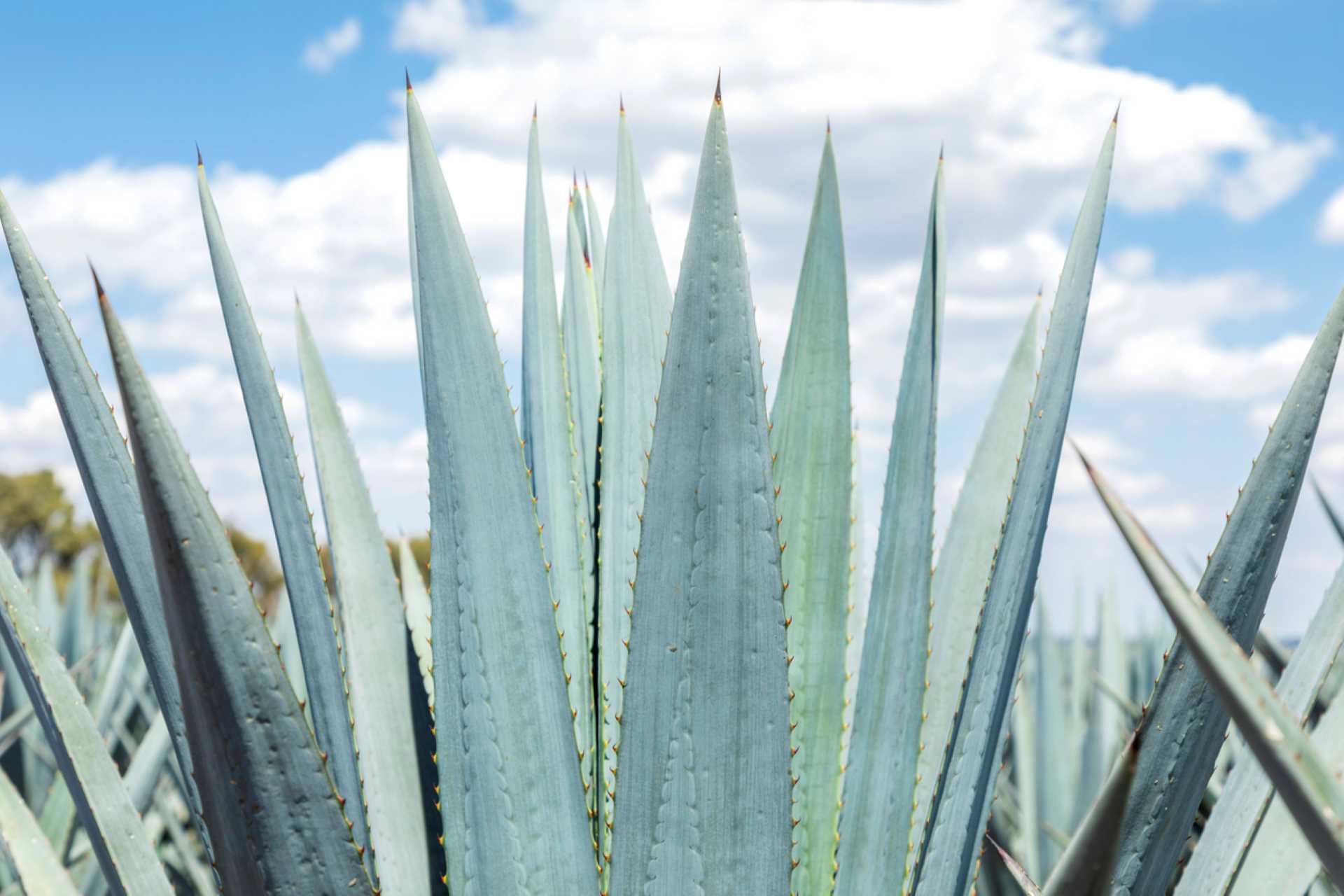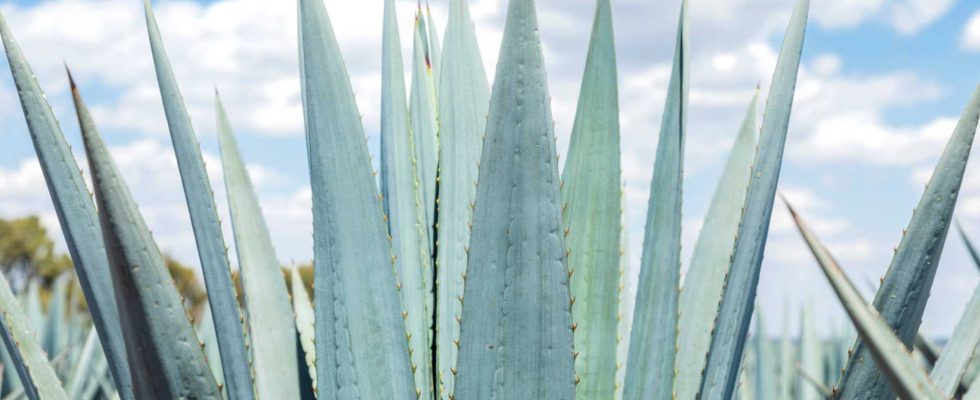
Presentation of blue agave
Fact sheet : | |
|---|---|
| Scientific name | Agave tequilana |
| Family | Asparagaceae |
| Other name | Blue agave, tequila agave |
| Etymology | Comes from the Greek word “αγαθος” which means “admirable” |
| Origin | Mexico |
| Dimensions | 2 m high |
| Flower color(s) | Yellows |
| Leaf color(s) | Blue |
| Appearance of the flowers | Very high floral stem topped with a flower |
| Appearance of the leaves | Long narrow leaves lined with thorns |
| Plant type | Succulent |
| Vegetation | Perennial |
| Foliage in winter | Persistent |
Culture sheet: | |
|---|---|
| Planting |
Jan.
Feb.
Mar.
Apr.
May
June
Jul.
August
Seven.
Oct.
Nov.
Dec. |
| Growth | Normal |
| Exposure | Sun, full sun, even very intense. |
| Ground | Drained |
| Humidity | Weak |
| Use | Pot, Tray, Rockery |
| Multiplication | Rejects |
| Disease(s) and pest(s) | Fungi, Weevils, Bacteria |
What is the ideal light and exposure for Mexican blue agave?
It is a plant that needs to be exposed to full sun to develop optimally. In regions with a warmer climate, it may be possible to install it in partial shade.
What is the ideal temperature for Mexican blue agave?
Due to its origin, the Mexican blue agave is a plant that particularly likes in regions where the climate remains mild throughout the year. In fact, it cannot withstand temperatures below -2°. If you live in a region where the thermometer frequently drops below this limit in winter, it is advisable to grow it in a pot so as to shelter it as soon as the bad season arrives.
Watering Mexican Blue Agave
Tequila agave is a plant that requires little watering. Indeed, if it easily tolerates episodes of drought, excess humidity can be fatal. In general, prefer watering at the base of the plant.
- If you grow your blue agave in a pot, water once a week in summer, then, as soon as it gets cooler, space out the waterings until you go down to one watering per month during winter. If you’re not sure when to water your plant, its potting soil is a good indicator: when it’s dry, it’s time to moisten it again.
- If you grow your blue agave in the ground, there is no need to water it. The only period during which this operation is necessary is during the first year to facilitate its rooting.
Ideal atmospheric humidity
As mentioned previously, the tequila agave is a hot climate plant that fears excess humidity. It appreciates dry climates and atmospheres.
What types of soil and fertilizer for your Mexican blue agave?
During growth periods, it is advisable to fertilize your blue agave. This will contribute to its good development, but it is not essential.
You must take care to install your agave tequilana in a sufficiently draining substrate. To do this :
- For growing in pots, you can use special succulent potting soil.
- For growing in the ground, simply add sand to your garden soil if your soil is not sufficiently draining. It is also advisable to add a bed of gravel at the bottom of the hole to promote water drainage.
Planting and repotting Mexican blue agave
- If your plant is grown in a pot : you can repot it every two years if you want to enrich the soil, but if the pot still seems suitable for its size and if your plant is doing well, it is better to leave it in the same pot. In fact, too frequent repotting can disrupt it. The best solution to limit pot changes is to plant it, from the start, in a sufficiently large pot.
- If your plant is grown in the ground: Be careful to reserve a sufficiently spacious space for it, because if this is not the case, it risks suffocating the plants located nearby.
How to propagate Mexican blue agave?
If your agave tequilana produces suckers, its propagation is very simple:
- Wait until these young shoots have reached a height of around fifteen centimeters.
- Take one or more carefully.
- You can then replant it or them in a pot or in the ground depending on the region in which you live.
How to prune Mexican blue agave?
Blue agave does not require pruning.
Cleaning the plant
The Mexican blue agave is a plant that requires little maintenance. For aesthetic reasons, it is possible to remove the dried out parts of the plant, which will also allow it to concentrate its energy on the healthy parts.
Agave species and varieties: there are many species
Mexican blue agave is a variety of agave. Agave has several hundred species and even more varieties, but only one can be used for tequila production: the Mexican blue agave. However, you should know that it is not a plant that exists in nature, because it comes from crosses fromagave angustifolia.
The 4 points to remember about Mexican blue agave
- The Mexican blue agave is a easy to grow plant which brings a touch of exoticism to any garden.
- Because agave is coldyou must ensure that the usual temperatures in your region are suitable for growing in the ground, otherwise it will be necessary to opt for growing in pots.
- Agave fears excess humiditywhich means that you must be careful not to water it too much and to plant it in a sufficiently draining substrate.
- Agave is not grown for its floweringsince this generally only occurs once in the life of this type of plant.

